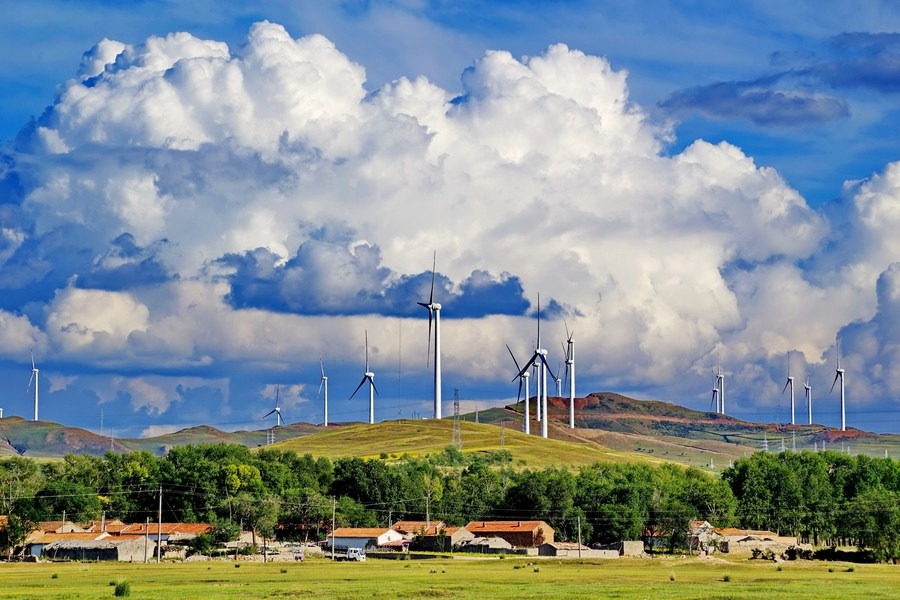Opportunity to be seized
Environmental cooperation between China and the EU can raise the global level of ambition and action


There is so much negative news these days: The novel coronavirus keeps spreading, the US-China relationship is at a dangerous low point, economies around the world are in tatters, and with all the negative rhetoric, the geopolitical landscape feels very fragile. It's all a bit much to take in.
But it's not all doom and gloom. There are important opportunities for China and the European Union to cooperate on environmental protection, and even raise the global level of ambition and action.
Both sides recognize this opportunity. Although physical exchanges have been replaced by virtual ones, the level of interaction on green issues is higher than before.
A rapid economic recovery from the pandemic is obviously the most pressing issue at this point in time. Many EU member states have already rolled out ambitious economic stimulus packages, and the EU members have just agreed on a 750 billion euro ($882 billion) package, which prioritizes "green" investments such as renewable energy, the circular economy, clean transport and logistics, and digital era investments such as 5G connectivity, artificial intelligence and super computing. In June, Germany unveiled a 130 billion euro package covering energy efficiency, green transport and hydrogen. France has also developed a green stimulus plan, focused on greening aviation, new energy vehicles, bicycle lanes, and greening small and medium-sized enterprises' activities.
At the beginning of the year, the Chinese government accelerated the building of "new infrastructure" for economic recovery, which covers sectors such as 5G, big data and AI, smart transportation and smart energy infrastructure such as electric vehicle charging points. The new infrastructure development could be made even greener by further incorporating low carbon investments, and more policies to this effect are expected to be introduced soon.
In China, the share of "green" stimulus investments in response to the 2008 financial crisis was somewhat limited. The share of green investments is expected to be much higher this time around, because environmental awareness in the country is so much greater now, and because there is more evidence that green spending is actually not just better for the environment, but also better for the economy. Recently, a National Green Development Fund was established, which is the first such fund focused on the environment at the national level.
Both sides would do well to apply the "do no significant harm" principle to all stimulus spending. This means that stimulus money cannot be spent on investments which do significant harm to the environment or exacerbate the global temperature rise.
The French example is very innovative in this regard. It bailed out KLM-Air France, but in turn required that the carrier reduce the CO2 emissions of domestic flights by 50 percent, and it is drafting a regulation against domestic flights when high-speed train services (duration less than 2.5 hours) are available.
There has recently been some international concern over China's level of coal investments. Also, it is likely that the majority of coal power will be loss-making by 2030.
But we should recognize that China is on track to meet all of its commitments under the Paris Agreement. In 2019, the indicators of carbon intensity reduction, non-fossil fuel share of energy production, and timber stock volume have achieved the target value of the 13th Five-Year Plan (2016-20), one year before the target date of 2020.
This obviously contrasts with the United States, which declared it would pull out less than a year after it was agreed. While some states and large enterprises are continuing to take climate action, the absence of the US in global climate governance really undermines the world's efforts.
But that makes EU-China climate cooperation even more important. As the whole world stands to lose from the climate crisis, the EU and China should remain at the heart of the international push to accelerate the global response, encouraging all countries to accelerate their transition to low carbon.
Similarly, the EU and China are at the center of the global response to the catastrophic loss of nature we have seen in the past decades. In the run-up to biodiversity COP15, originally planned to be held in Kunming, Yunnan province, in October, the EU-China Environment Project has organized a series of bilateral workshops for government negotiators to informally discuss the design of the post-2020 global biodiversity framework.
Ironically, while this agenda was already really pressing, it just got a lot more important due to COVID-19 outbreak. There is evidence that zoonotic diseases including COVID-19, are more likely to emerge as humanity continues to degrade the natural habitat.
Given the severity of the climate and nature crises, environmental cooperation between the EU and China stands to make or break the sustainability of civilization as we know it. A rift between the two regions could break the global momentum and take climate efforts back by a decade or more, which is a decade we can't afford. Any ideological or other differences between the two regions should be seen with this higher objective in mind. The EU and China should play a role of cooperative leadership on green and high quality economic recovery and providing green global public goods.
We have confidence that the EU-China environmental partnership will further strengthen, and common approaches will be developed toward green economic recovery, climate action, ecological protection and sustainable supply chains. These success stories will boost confidence among countries, cities, businesses, institutions and people around the world, making a major joint contribution toward sustainable development and building a truly ecological civilization.
Dimitri de Boer is the chief representative for China of the ClientEarth, and the team leader of the EU-China Environment Project. Wang Yi is vice-president of the Institutes of Science and Development at the Chinese Academy of Sciences. The authors contributed this article to China Watch, a think tank powered by China Daily. The views do not necessarily reflect those of China Daily.


































